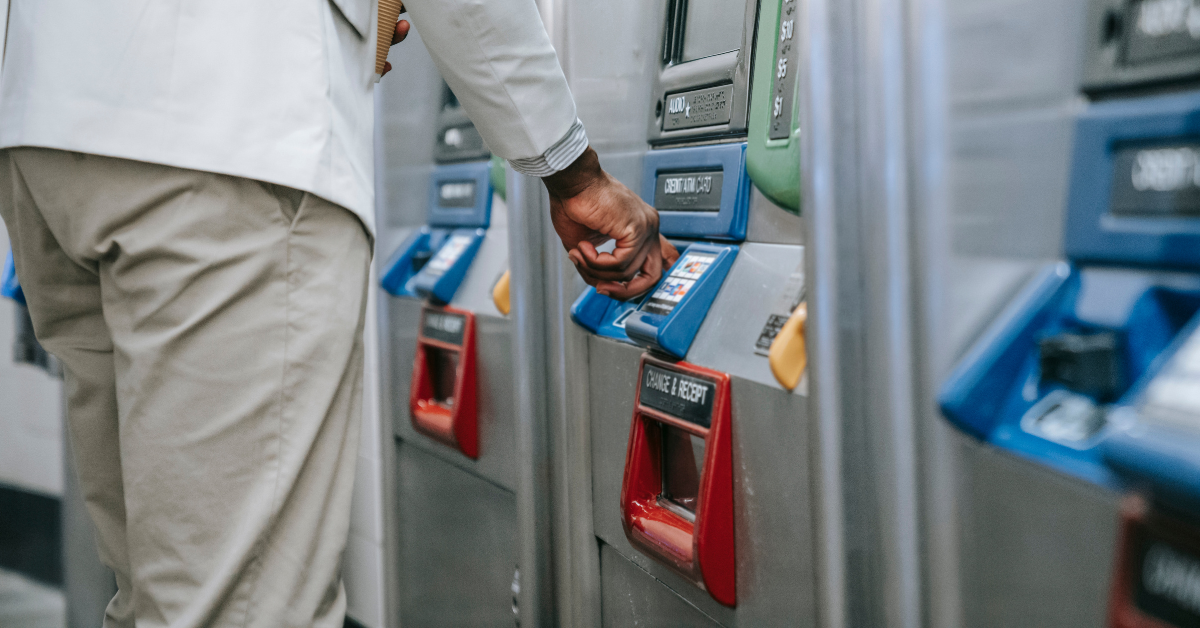The Role of Account Based Ticketing (ABT) In Public Transportation Systems
by Andreea

Contactless payments are now an essential part of day-to-day life, and in public transport systems, the ability to make fast, convenient payments is vital. Standing in line to buy tickets or fumbling with cash are outdated aspects, and commuters demand modern solutions such as Account-Based Ticketing (ABT).
What is Account-Based Ticketing, though, and what are the benefits for passengers and transit agencies? We thought we would explore those questions and more in this article.
What is ABT?
Before we can look at the advantages of Account-Based Ticketing (ABT) it is first important to understand exactly what it is. The technology is a fare collection system where there is no requirement for a physical ticket or card. Instead, the fare is linked with a passenger’s user account in the cloud.
Unlike a traditional ticketing system, where the value is stored on a ticket or card, in an ABT system, the transaction is carried out when a user identifies themselves. They can do so by using their smart card, mobile phone, or other payment methods like an EMV card, and the system will automatically deduct the correct fare from the account.
How Does ABT Work?
Now you know the ABT meaning, how exactly does it work? In an Account-Based Ticketing system, a commuter will tap in at the start and end of their journey. This could be a transit card, mobile phone, or contactless EMV card such as a Visa or Mastercard.
The system will identify the individual commuters when they tap in and then track their journey through the system. At the end, after tapping out, the fare will be calculated and the cost deducted from their account. The key difference from traditional ticketing systems is that the fare processing is done in real-time.
When looking at the question, “What is Account-Based Ticketing?” the key steps to remember are:
- Tapping In
The first step in the process is for the passenger to tap in with their contactless device. This begins their journey in the system.
- Travel Tracking
The system will then record the start point and monitor the customer’s trip, noting when they exit the transit system.
- Tapping Out
Once the trip ends, the customer will tap out using the same method. The ABT system will automatically calculate the fare based on the distance traveled, the time of day, and the mode of transport used.
- Account Charging
That fare will then be deducted from the passenger’s account, which can be a stored value wallet, a linked bank account, or through a contactless payment card.
An Account-Based Ticketing system is highly flexible and allows transit operators to implement different fare structures. These could include distance-based journeys, daily capping, or discounts based on travel patterns. Since the system handles everything remotely in the backend, it offers vast possibilities for customization.
ABT meaning and Contactless Payments
One of the core components of an Account-Based Ticketing system is its ability to integrate with contactless EMV payments. These have rapidly grown in popularity in recent years, offering a secure and seamless way to pay for goods and services.
These cards use radio-frequency identification (RFID) technology to allow for quick and secure transactions. For transit passengers, it means they can access rides without needing to purchase additional tickets or passes. Instead, passengers just need to tap their EMV card, Apple Pay, or Google Pay device on the transit reader. The system will recognize this device, link it to the commuter’s account, and process the fare in the background.
What Are the Benefits of Account-Based Ticketing?
Now that we have explored the question of “What is Account-Based Ticketing?” and how it works, let’s turn our attention to the advantages it provides. Incorporating ABT into your transit system can offer a wide range of benefits for both commuters and transit agencies alike.
The Benefits of ABT for Riders
Modern commuters want modern and rapid transit experiences, and there are a wide range of benefits of implementing ABT, including:
- Greater Convenience
Riders will no longer need to worry about purchasing tickets, keeping track of fare zones, or maintaining a separate transit card. Instead, they simply need to tap in and out with their contactless card, smartphone, or wearable device, and the system will do the rest.
- Flexible Payment Options
ABT systems are able to support a wide range of payment methods, including transit cards, EMV contactless cards, mobile payments, and wearable devices. This means commuters are able to use the solution that is most convenient to them.
- Fare Capping
Many ABT systems offer daily, weekly, or monthly fare capping. This ensures that travelers will never pay more than a maximum amount for their travel, even if they take multiple trips throughout that period. This saves them money and eliminates the need to pay for expensive passes upfront.
- Real-Time Account Management
Users will also be able to manage their accounts via mobile apps or online portals. This will include things such as transaction history, finds, and the ability to link payment methods.
The Benefits of ABT for Transit Agencies
Incorporating ABT into a transit system is not only beneficial for travelers. It is also advantageous for operators as well.
- Operational Efficiency
Account-Based Ticketing removes the need for physical ticket sales and associated infrastructure (such as ticket vending machines). This helps to cut down on operational costs and reduces maintenance requirements.
- Data-Driven Insights
As we explored when looking at the ABT meaning, these systems track the movements of passengers. This generates a wealth of data on travel patterns and passenger behavior, which operators can use to optimize routes, schedules, and pricing strategies. This results in better service for customers and smoother operation.
- Reduced Fraud and Fare Evasion
As the system calculates and processes fares in real-time, it drastically reduces the risk of fare evasion. ABT systems are also harder to manipulate compared to the more traditional ticketing methods, helping to increase revenue protection.
- Scalability
ABT systems are highly scalable and can easily adapt to accommodate growing transit networks or increasing passenger numbers without requiring substantial infrastructure changes.
What Are the Challenges of ABT?
While there are a number of benefits to implementing Account-Based Ticketing into a transit system, it is not without its challenges. The biggest of these being the hardware and software investment it requires. Transit operators will need to ensure their card readers are capable of interacting with various contactless payment methods. They will also need to invest in backend infrastructure that can manage accounts, process transactions, and calculate fares in real time. While this requires an upfront investment, the long-term savings soon offset it.
Integrating contactless EMV payments means transit operators will need to consider various payment processing fees. Unlike traditional transit card systems, where all fare revenue goes directly to the operator, EMV transactions incur costs from the card network.
User adoption can be another barrier for organisations with not all users feeling comfortable using contactless payments. Transit operators will need to ensure that their ABT systems are inclusive for everyone. It’s also vital that alternative options are still available for those who might not have access to the necessary technology. A phased approach with adequate education will help boost adoption rates and ensure a smooth transition.
Finally, privacy and data security are paramount, especially as these systems rely heavily on cloud-based data storage. Transit operators will need to invest in robust cybersecurity measures to prevent data breaches and protect passenger information. It’s also very important that operators are transparent about how they collect, store, and use travel data.
Implementing ABT Into Your Transit System
ABT systems offer greater convenience, flexibility, and efficiency for both commuters and transit operators. The integration of contactless EMV payments takes this convenience a step further, enabling seamless travel without the need for dedicated transit cards or cash.
While there are challenges to implementing Account-Based Ticketing, the long-term benefits make it a compelling solution for any public transport system looking to modernize.
As a trusted transit payment specialist for transit and mobility networks, Littlepay is here to help you transform your fare collection system. Want to find out more? Get in touch today!
 Insight
Insight
 Knowledge
Knowledge
 News
News






